|
|
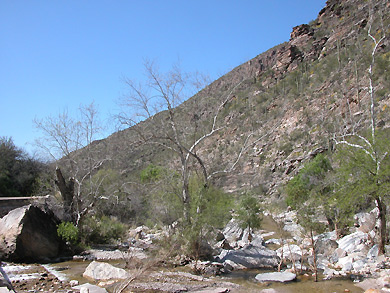 |
TEXT LEFT: "As you walk along the trail beginning at the foot of the stairs to your right, look for cup-shaped holes worn into the rocks. These grindstones, or mortars, remind us that Sabino Canyon was visited by other people long ago.
Beginning more than a thousand years ago Hohokam Indians came to Sabino Canyon to hunt rabbits and deer, gather cactus fruits and the hearts of agaves, and follow trails to higher elevations. They used the mortars here to grind hard seeds, such as pods from mesquite trees. Perhaps they paused now and then to rest in the shade of the sycamores, cool their feet in the stream and
enjoy the beauty of the canyon, just as we do today.
The Hohokam vanished for unknown reasons about six hundred years ago. Now there are little more than scattered pottery fragments and grindstones to show they were ever in Sabino Canyon. Six hundred years
from now, what signs will remain of our own presence here?" |
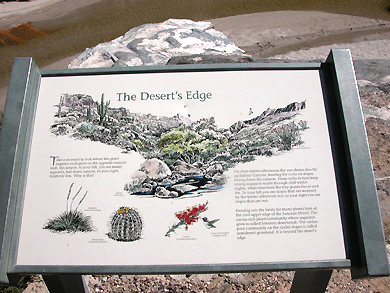 |
| Scene looking right: -- no saguaro; |
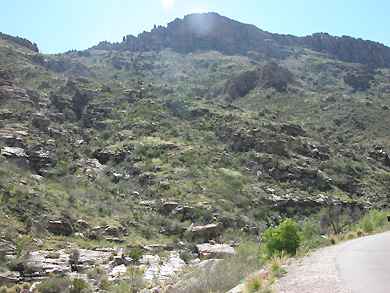 |
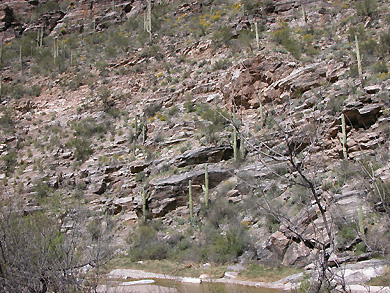 |
| No shortage of saguaro here. |
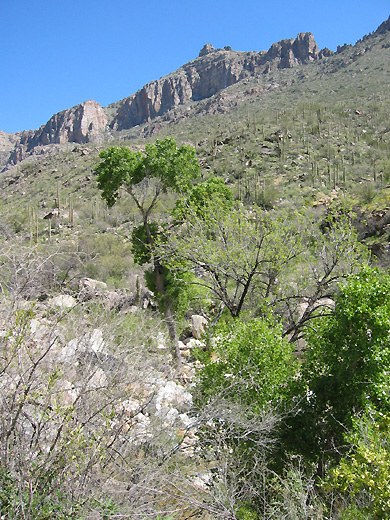 |
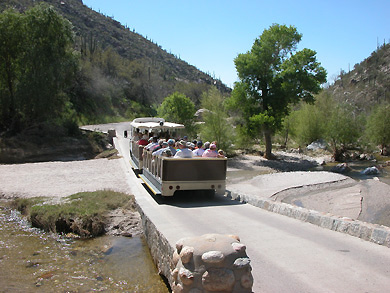 |
| The lazy folk that rode down. They missed the fun but had
dry feet. |
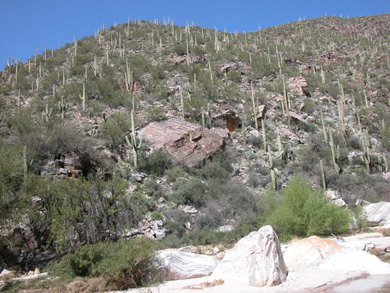 |
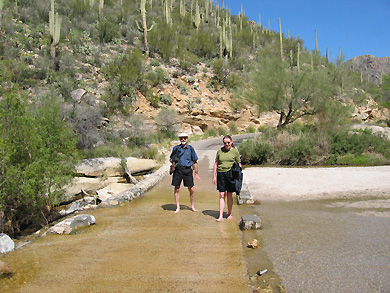 |
|